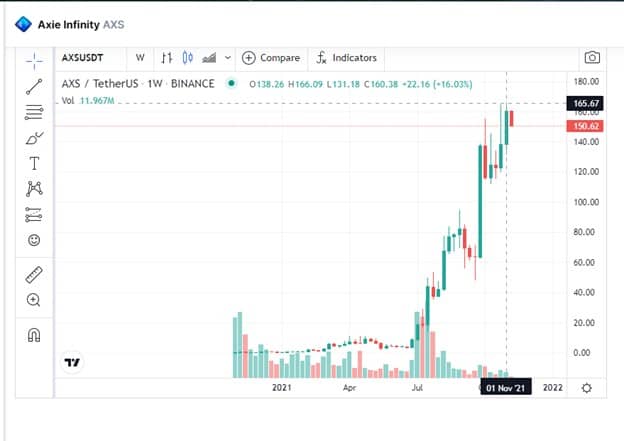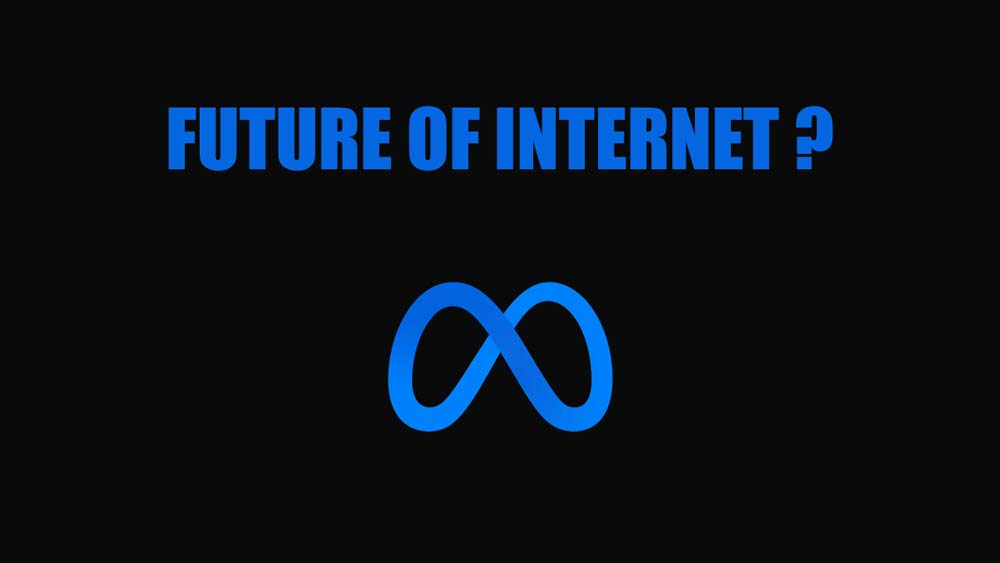Metaverse tokens experienced a drastic rise in value soon after Facebook Inc. was relaunched as Meta by Facebook CEO Mark Zuckerberg, rewarding existing coin holders with huge rewards. Similarly, several NFT projects have been generating much buzz in recent weeks.Despite experiencing immense growth over the past few weeks, many crypto enthusiasts still question the long-term prospects of NFT’s and Metaverse projects. Our goal in this article is to examine the NFT and Metaverse space in order to predict their future potential. However, before we discuss the future potentials of these projects, let us quickly discuss each project individually. Additionally, we will focus on the link between both concepts and discuss how they function with each other.
What is Metaverse ?
Despite experiencing immense growth over the past few weeks, many crypto enthusiasts still question the long-term prospects of NFT’s and Metaverse projects. Our goal in this article is to examine the NFT and Metaverse space in order to predict their future potential. However, before we discuss the future potentials of these projects, let us quickly discuss each project individually. Additionally, we will focus on the link between both concepts and discuss how they function with each other.Metaverse is a science fiction term and defining its meaning is best accomplished by breaking the word into two parts. The first part Meta means beyond, while the second term verse is used to describe the entire universe. Together, the term metaverse means worlds and universes outside our own.A metaverse is a virtual world that simulates the activities that people do every day. Therefore, Metaverse users can purchase land, build houses, visit buildings, attend events, and play games. As well as creating avatars, users on a metaverse can conduct buying and selling activities. Most Metaverses are built on blockchain technology as a result; they incorporate cryptocurrencies as the primary means of conducting transactions.The concept of a metaverse has been around for years. It was during the Covid 19 pandemic, though, that metaverses became more mainstream. Metaverses fall into two main categories.The first category of metaverses is based on blockchain technology. Cryptocurrencies and non-fungible tokens are used to conduct transactions and engage in day-to-day activities in metaverses built on blockchainn technology. Examples of blockchain-based virtual worlds include The Sandbox and Decentraland. These platforms both offer players the option of purchasing virtual lands. Additionally, users can construct their own environments within these virtual worlds. There are other blockchain-based gaming Metaverses like Axie Infinity and ENJIN. That rewards players with funds for engaging in gameplay in the Metaverse.The second category of metaverse simply refers to virtual worlds where people can meet up for business or recreation. However, these types of metaverses don’t utilize blockchains at all. Games like Roblox, Fortnite, and Minecraft fall into this category of Metaverse. Games such as Roblox, Fortnite, and Minecraft are quite popular with gamers worldwide, and they have been around for a long time.
What are NFT’s ?
A non-fungible token is a cryptographic asset created using blockchain technology. As a result of their cryptographic nature, NFTs contain metadata and unique identification codes that differentiate them from other non-fungible tokens and cryptocurrencies. Since NFT’s are unique, they cannot be traded or exchanged at equivalency like other crypto assets.The main difference between NFT’s and regular cryptocurrencies like Bitcoin (BTC), Solana (SOL), Ether (ETH), Ripple (XRP) is fungibility. Regular cryptocurrencies can be used as a means of payment during business transactions because they are fungible.A fungible token can be exchanged for another fungible token of similar value. Essentially, this means that one Bitcoin is worth the same as another Bitcoin. All fungible tokens or cryptocurrencies operate on the same principle.Non-fungible tokens, unlike fungible tokens, cannot be exchanged since they are not identical to each other. As a result, they cannot be used for business transactions. Non-fungible tokens are not equivalent to one another like cryptocurrencies.They can come in form of digitized art like the popular pixelated pictures called “Everyday: The First 5,000 Days”, by Mike Winkelmann. This sold for a whopping $69 million

The Link Between NFT’S And Metaverse Projects
So far, the worldwide adoption of Metaverse has been facilitated by incorporating non-fungible tokens into these virtual realities. Additionally, NFT’s will play a major role in the continuous adoption of Metaverse projects in the future.This belief is based on the mutual relationship between these concepts. In numerous Metaverses, blockchain technology is also used to build Avatars used as characters. As a result, blockchain-based Metaverses allow users to create unique and personalized digital avatars based on users’ real-life identities. In simpler terms, Metaverse users can create digital avatars that serve as NFT’s and are interoperable across various networks.Incorporating NFTs into Metaverse has the benefit of allowing users of such platforms to create and develop unique and different tokens that are not available in other NFT platforms. Metaverse players can also use their digital avatars to immerse themselves in several activities when they log into alternate universes. Most importantly, NFTs provide a way for Metaverse players to generate revenue. The creation of numerous blockchain-based NFT marketplaces demonstrates this trend.
Long Term Projection for NFT’s And Metaverse Projects
Based on several factors, there is credible evidence to suggest that most Metaverse projects will enjoy huge growth in the long term. Since NFTs are a key component of these metaverse projects, we also expect to see sustained growth in the value of non-fungible tokens in the long term.These conclusions are based on several factors. In July 2021, shortly before its name was changed from Facebook to Meta, the company announced it had already begun to create its own metaverse.Meta announced in a statement that it would invest $10 billion in profits into the development of the Metaverse, a platform focusing on augmented and virtual reality. Mark Zuckerberg, CEO of Meta, said his company aims to hire 10,000 people to work on the metaverse.This move by Meta points to the belief that the Metaverse can experience more growth in the future. The company’s change in direction also led to a change in name from Facebook to Meta.Another factor for the potential long-term growth of NFT’s and Metaverse is the general adoption of Play to earn games worldwide. The success of Axie Infinity in this regard has played a major role in the growth of gaming Metaverses. At its launch, the price of AXS, the native token of the Axie Infinity project, was worth $0.1982; however, within a year, the token hit an all-time price worth $165.37. Currently, the token price ranges within the $150 – $155 range.

As a result of the success of Axie Infinity, other Play-to-earn metaverse games have been created and gradually launched, indicating there is room for more growth in the Metaverse and NFT space. Some of these upcoming NFT games include games like Genopets, Illuvium, Lightnite, Star Atlas, to name a few.Considering these factors and the current acceptance and adoption of NFT’s and Metaverse’s projects, the future looks positive. Cryptocurrencies, however, are very volatile and prone to huge price fluctuations. Because of this, we encourage our readers to do thorough research before investing in any crypto assets, NFT’s, or Metaverse projects.









